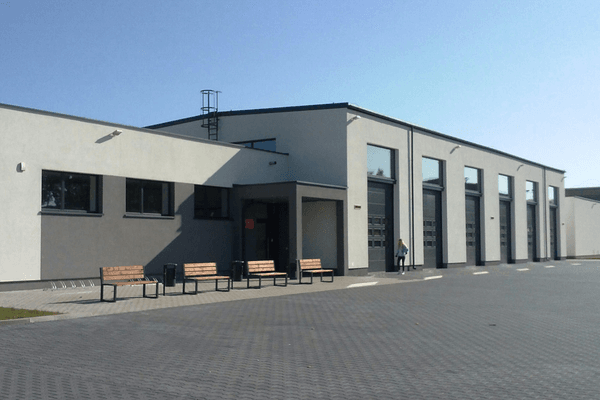
Share
Australia's industrial property market shifts from expansion to strategic consolidation in 2025, creating new investment opportunities worth $44.45 billion by 2034.
Australia’s industrial property sector has reached a pivotal moment. After $8.8 billion in transaction volume and unprecedented warehouse expansion during the pandemic years, the market is experiencing a fundamental shift that smart property investors cannot afford to ignore. Businesses are abandoning the “expand at all costs” mentality in favour of strategic consolidation, creating new investment dynamics worth $44.45 billion by 2034.
This transformation represents more than market correction - it signals the evolution of industrial real estate into a sophisticated asset class where efficiency trumps expansion and technology drives value creation.
From panic buying to strategic planning
The pandemic era of 2020-2023 triggered a warehouse land grab unlike anything Australia had seen. Companies secured space first and optimised later, driving industrial supply to 3.06 million square metres in 2024 - a staggering 74.8% above the 10-year average.
Today’s market tells a different story. JLL’s Nathan Bingham reports businesses are now “consolidating operations within their existing properties before expanding to new spaces, balancing leasing costs with connectivity to customers.” This strategic pivot creates distinct winners and losers in the property investment landscape.
For investors, this shift eliminates the scarcity premium that inflated values during peak demand. However, it rewards those who can identify assets aligned with the new efficiency-focused tenant requirements.
The numbers driving consolidation decisions
Despite the strategic shift toward consolidation, financial fundamentals remain compelling for quality industrial assets. Prime net face rents increased 9.4% nationally, though this growth varies dramatically by region - creating clear investment opportunities for those who understand the geographic nuances.
Brisbane leads with exceptional 13.2% rental growth, attracting $500 million in investment activity representing a 16% year-on-year increase. Queensland’s performance demonstrates how regional markets can outperform during consolidation periods when they offer the right combination of affordability and growth prospects.
Asset values continue their upward trajectory with industrial properties averaging 16% growth, rising from $3,735 to $4,333 per square metre nationally. This appreciation occurred alongside 98.9% occupancy rates, proving that quality assets maintain their appeal even as supply increases.
Investment insight: The yield landscape offers opportunities across risk profiles, with current returns ranging 5.52-5.66%. While yields have softened slightly, this recalibration creates entry points for investors who previously found the market overheated.
Technology creates the next value proposition
The consolidation trend succeeds because advancing technology enables businesses to achieve more with less space. For property investors, this creates a clear differentiation between future-ready assets and those facing obsolescence.
Automated Storage and Retrieval Systems (ASRS) and Autonomous Mobile Robots (AMRs) are transforming warehouse productivity throughout 2025. Properties equipped for these technologies command premium rents because they enable tenants to consolidate multiple facilities into single, highly efficient operations.
Software orchestration represents the invisible value driver. Modern Warehouse Management Systems synchronise people, processes, and machines, creating operational ecosystems that justify higher rents. Properties with adequate power infrastructure, appropriate floor loading, and connectivity capabilities position themselves to attract tenants pursuing technology-enabled consolidation.
Energy efficiency adds another layer of value. Electric automation systems using just 0.1 kilowatt-hours per hour align with government Net Zero targets by 2050, attracting ESG-focused tenants willing to pay premiums for sustainable facilities.
Investment strategy: Target properties with technology readiness rather than just location. The highest returns will come from assets that support tenant efficiency gains, not simply those offering cheap space.
Regional opportunities reflect different risk-return profiles
Queensland emerges as the standout opportunity for growth-focused investors. Brisbane’s $500 million investment activity and 13.2% rental growth reflect a market where consolidation benefits high-quality assets. The stabilisation of debt costs since late 2023 provides pricing clarity previously absent from the market.
Western Australia suits investors seeking value with upside potential. Perth’s 20%+ price increases driven by population growth and resource sector strength create momentum, though investors should assess whether growth has reached peak levels.
Victoria presents opportunities for patient capital. Melbourne’s 2.8% vacancy rate - the highest in five years - creates selective buying opportunities as the market adjusts to increased supply. Quality assets in strategic locations may offer attractive entry points.
New South Wales maintains its premium positioning with industrial values at $6,275 per square metre. While entry costs are higher, the mature infrastructure and proximity to Australia’s largest consumer market support long-term value retention.
Risk management: Cap rate variations from 5.1% in NSW to 6.1% in WA reflect different risk-return profiles. Match your investment timeline and risk tolerance to appropriate regional markets.
Future-proofing your industrial property strategy
Three structural trends will shape industrial property returns through the remainder of the decade, creating planning opportunities for strategic investors.
E-commerce recovery from 12.7% to 13.7% penetration indicates continued growth in sectors requiring distribution infrastructure. Unlike the pandemic surge, this represents sustainable demand growth supporting long-term rental growth.
Infrastructure development creates multiplier effects. The National Housing Accord’s 1.2 million new homes target by 2029 requires construction supply chains, while renewable energy and defence investments generate specialised facility demand.
Sustainability requirements will increasingly separate premium from secondary assets. Properties incorporating renewable energy, waste reduction systems, and green building materials will command rent premiums as tenant ESG requirements intensify.
Forward planning: The 50% pre-commitment rate for 2024 industrial supply demonstrates continued strong tenant demand. Early positioning in markets benefiting from these trends provides first-mover advantages.
Investment implications for different capital profiles
Individual investors should focus on secondary markets offering growth potential with manageable entry costs. Regional Queensland and Western Australia locations provide opportunities to participate in consolidation benefits without premium market pricing.
Institutional investors can capitalise on the trend toward larger, technology-enabled facilities. The shift from 9% institutional participation in 2009 to 49% by 2018 reflects growing recognition of industrial property as a distinct asset class worthy of allocation.
Syndicated investment opportunities allow smaller investors to access premium assets. Properties in the $3.2 million median range provide institutional-quality features with shared ownership structures.
Action plan: Match your capital availability and risk tolerance to appropriate market segments. Growth markets reward patient capital, while established markets provide stability with modest growth.
Positioning for the consolidation advantage
Australia’s industrial property transformation from expansion to consolidation creates opportunities for investors who adapt their strategies to new market realities. The combination of strong fundamentals, technology-driven efficiency gains, and continued demand growth supports positive investment outcomes for those positioning correctly.
Success requires moving beyond location-only investment criteria toward assets supporting tenant operational objectives. Properties enabling consolidation strategies will outperform those simply offering cheap space.
The sector’s projected growth to $44.45 billion by 2034 reflects industrial property’s critical role in Australia’s economic infrastructure. Rather than viewing consolidation as market weakness, smart investors recognise this evolution as validation of the asset class’s growing sophistication.
For property investors ready to embrace this new paradigm, the consolidation era offers compelling opportunities to participate in the next phase of Australia’s industrial property growth story.
Further questions
What is driving the shift from warehouse expansion to consolidation in Australia's industrial property market
How are property investors benefiting from the warehouse consolidation trend
Which Australian regions offer the best industrial property investment opportunities in 2025
What role does technology play in the value of industrial properties during consolidation
What are the long-term investment prospects for Australia's industrial property market
This is general information only and is subject to change at any given time. Your complete financial situation will need to be assessed before acceptance of any proposal or product.





